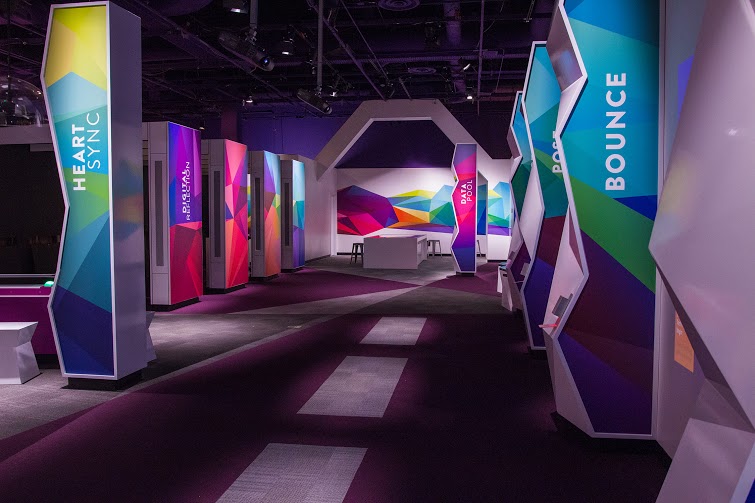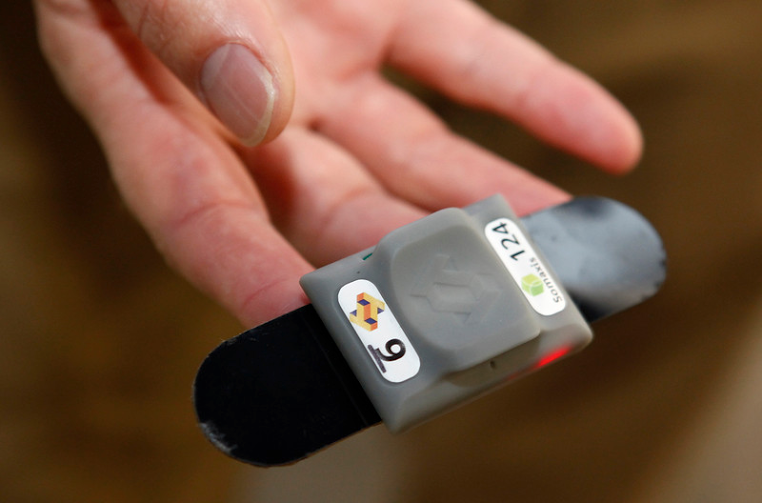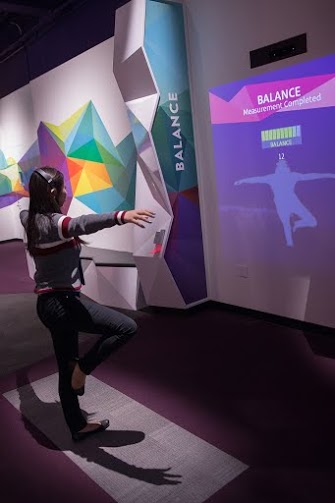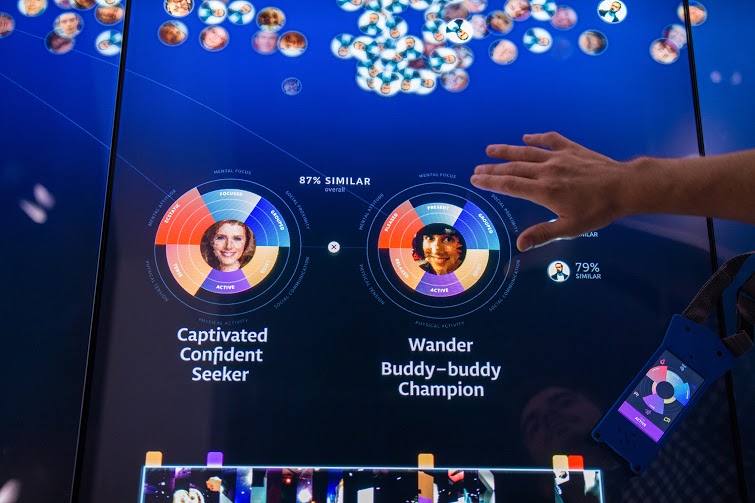
In TrendsWatch 2015 I cited The Tech Museum of Innovation for their creative exhibition on wearables called Body Metrics. We are pleased to bring you an update on the exhibition from Romie Littrell, Curator / Project Director – Health and Biotech.
CFM highlighted The Tech Museum of Innovation in the 2015 edition of Trendswatch for our use of wearables in the Body Metrics exhibition, presented by Kaiser Permanente. We have just passed the six-month mark and are reflecting on what works and what changes we would like to make for our 2.0 revision.
 |
| Photo Credit: Ya’im Beyah |
Our primary motivation was to develop this exhibition to improve the health and wellness of our community. Body Metrics stands apart from most health exhibitions because of The Tech’s strong emphasis on making and doing. We recognize that health improvement and behavior change are notoriously difficult goals, and that simple knowledge of best practices is not the road to health improvement (learning about the negative aspects of our bad habits can just as easily trigger cravings and aversion). What we have found to be memorable, however, is extended, full-body, social experiences. Using those criteria for The Tech’s version of a health exhibition brought us to developing a behavior and activity tracking-based experience where the focus was not on what is good or bad for us, but that paying attention to what we do as the key to positive change.
 |
| Photo Credit: Ya’im Beyah |
Wearable sensors also meshed well with our mission-related goal to highlight innovative technology, not just because of the booming Quantified Self movement in Silicon Valley, but because they are basic tools for interactivity and self-reflection. Tapping into the experiences of visitors and their personal activity became a way for us to create a platform that was more layered and purposeful. San Jose has one of the most diverse populations in terms of race, class, and education. So designing for visitors who are both data-driven and those who have never thought about tracking before posed an interesting challenge. The exhibition, though heavily reliant on the streams of data, became more a problem of narrative than technology. And so we ran into one of the key challenges faced by wearable tech companies: “Why”?
 |
| Photo Credit: Ya’im Beyah |
Telling an engaging story around activity data is a big ask for trackers like Fitbit, where the user needs to provide context. As tracking sensors themselves are relative commodities, the user experience is essentially based on the interpretation of data rather than the tracking itself (and in part the fashion statement made). In actuality, it appears wearable real-time computation represents a large portion of the value in this space, with all that the retrospectively hilarious attempts and modern failures like Google Glass entail. We have an easier time in museums, where context is explicit and and our expanded set of sensors can make correlations more realistic. Still, the real-time interpretation and visualization back-end software that was designed and implemented by Local Projects became the hidden hero. It, however, required intensive data handling infrastructure generously donated by NetApp. As a visitor experience about wearables, such investments are decidedly overkill, but they remain necessary if The Tech plans to contribute to the “holy grail of museum metrics” and generate enough big data to glean the impact that museum visitation has on visitor education, health, and overall well-being.
 |
| Photo Credit: Ya’im Beyah |
The key to our successful tech integration was establishing the partnerships that drive the evolution over the life of the exhibition, showcasing technology when appropriate and abstracting what will quickly fade. Our experimental peripheral device, a modified version of the Cricket, is a wireless tension and heart-rate sensor and was the product of a collaboration with Somaxis, a wearables startup. The ability to provide input on development of a museum-grade version, and to collaborate on skin patches that are inexpensive enough to be disposable, was crucial to enabling our long-term exhibition. The Neurosky Mindwave we use for EEG metrics is, by contrast, a partnership with a finished product we added to our system because of NeuroSky’s open-source policies,allows us to incorporate their output with our metrics. For the smartphone-based interface we chose to heavily obscure all but the screen with casing, as its branded appearance would add connotations outside the scope of the experience, but we also wanted to maintain the smartphone “feel” and emphasize that these technologies are real and available outside the museum.
The recent explosion of new smartphone tracking apps and wearables integration gives new opportunities for BYOD exhibits where museum-branded downloadable apps read visitor response as well as provide content. Visitors have commented on how meaningful it has been to see their entire visit visualized through time lapse, correlations, and comparisons with other visitors. Their feedback of the exhibition is encouraging and teaches us that visitors are equally as interested in reflecting on their responses to exhibitions as museum professionals. Though we have not yet finalized how much visitor data is appropriate to have accessible, there is a strong consensus that guests would like to be able to revisit their museum experience online. Future capacity for using personal devices makes taking this introspection outside of the museum a real possibility, bringing us closer to the cultural engagement metric we would love to help reach.








